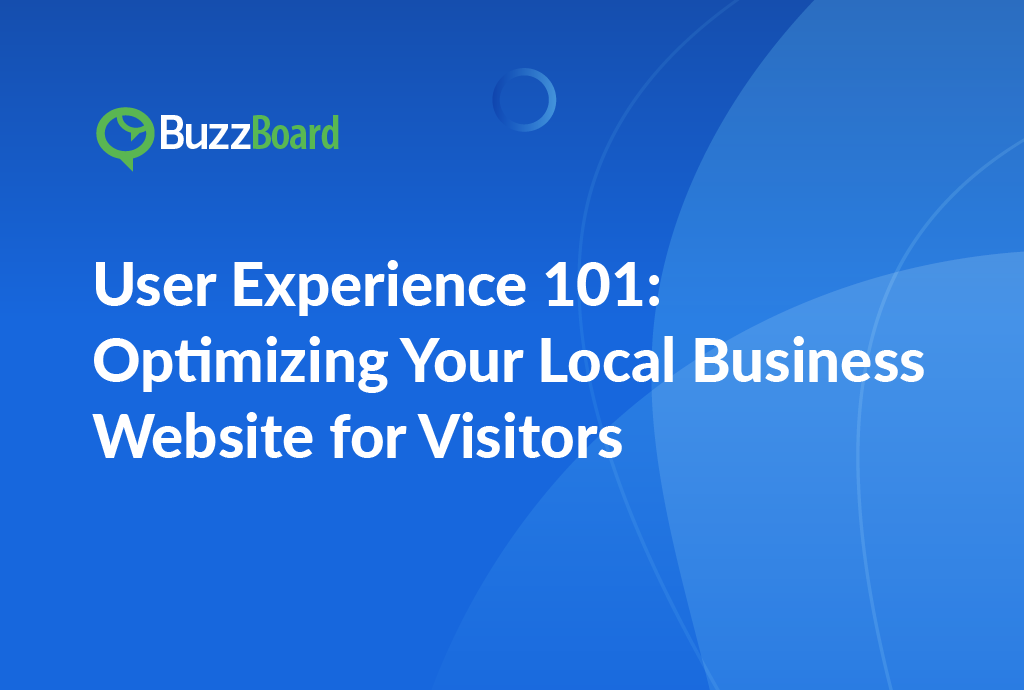Optimize a Local Business Website for Visitors
In this comprehensive guide, learn how to optimize your local business website for maximum visitor engagement and conversion. Discover the essential UX design principles, SEO strategies, and user-friendly best practices to improve your website’s user experience, increase customer loyalty, and drive more sales. From crafting a compelling homepage to optimizing images and content, get expert tips to elevate your online presence and stand out from the competition.
The Importance of User Experience and Website Optimization for Local Business Websites
User experience and website optimization are vital components of any successful digital business span, especially for local business websites.
When visitors arrive at your website – whether through a search engine or a referral link – the user experience can determine whether they remain or leave. Components like an intuitive interface, easy navigation, and useful content drastically improve the user experience. Consequently, every interaction a visitor has with a local business website should be smooth, productive, and efficient, increasing the likelihood of conversion to a paying, or ideally, a repeat customer.
However, providing an excellent user experience isn’t enough in itself. Strategic promotion of business websites to improve their visibility in local search results is also necessary. That’s where website optimization steps in. Optimizing the content for specific, locally-targeted keywords, accelerating page loading times, and ensuring mobile-friendliness will significantly improve a local business website’s search engine rankings.
Understanding these factors as salespeople will make it easier to discuss how designing and optimizing local business websites for user experience can significantly contribute to a business’s growth. This knowledge equips you as salespeople to better guide your clients, empowering them to thrive in the competitive digital landscape.
Don’t forget, the importance of a well-optimized local business website isn’t only about aesthetics – it’s about providing website visitors with a smooth online experience that drives conversions and fosters brand loyalty.
Steps for Optimizing Local Business Website for Enhanced User Experience
Optimizing a local business website is a crucial step in creating a seamless user experience that transforms visitors into loyal patrons. A well-optimized site puts your local business at customers’ fingertips, boosting engagement and conversions. In today’s fast-paced digital world, a slow-loading site can result in lost visitors and business opportunities. Therefore, it’s essential to ensure your website loads swiftly by compressing images and streamlining your code to decrease load times. Additionally, personalizing website elements for returning users will significantly enhance the user experience, making them feel valued and understood.
Another key aspect of optimization is strategic keyword targeting. Incorporate local keywords to attract your local audience and optimize these keywords in your website content, title tags, meta descriptions, and even your URLs to increase visibility in local searches. This will help your website appear at the top of search engine results pages (SERPs) when customers search for products or services related to your business.
Furthermore, guarantee your local business website is mobile-friendly. Most visitors rely on their mobile devices for internet browsing, and a responsive design that adapts to various screen sizes can significantly improve the user experience. A mobile-friendly website ensures that your content is easily accessible and readable on different devices, reducing the likelihood of visitors abandoning your site due to poor usability.
Integrating a customer review strategy into your site is also crucial. Reviews directly impact local search rankings and convey trustworthiness and credibility to your website visitors. Respond to both positive and negative reviews to demonstrate that you value customer feedback and are committed to continuous improvement. This not only shows that you care about your customers’ opinions but also helps to build trust and loyalty.
Moreover, providing a quality user experience is not a one-time process; it demands regular testing and improvements. Conduct A/B testing to identify areas for improvement, and use analytics tools to track user behavior and identify pain points. By continuously refining your website’s performance, you can optimize the user experience and drive more conversions.
Relevance and consistency are key in optimizing your local business website. Focus on crafting a tailored customer journey to make your visitors feel understood and cared for, as this can translate them into loyal customers. This involves understanding your target audience’s needs, preferences, and pain points and designing your website to address these issues. By providing a personalized experience, you can differentiate your business from competitors and establish a strong brand reputation.
In addition, ensure that your website is easy to navigate and provides clear calls-to-action (CTAs) to guide visitors through the conversion process. Use simple and concise language, and avoid cluttering your website with unnecessary information. Make sure your website is secure and has an SSL certificate to ensure a safe and trustworthy experience for your visitors.
Finally, stay up-to-date with the latest SEO trends and best practices to ensure your website remains competitive. Regularly update your content, and use social media to promote your website and engage with your audience. By following these tips, you can optimize your local business website and drive more conversions, ultimately growing your business and increasing customer loyalty.
Impact of User Experience on Website Visitors’ Behaviour and Conversions
The significance of user experience’s (UX) influence on the behavior of website visitors and conversions is undeniable. When optimizing a local business website, user experience should be a major consideration. Studies reveal that a well-designed user interface can potentially boost your website’s conversion rate by up to 200%. Additionally, improved UX could result in conversion rates soaring up to 400% (Salesforce). Such data underscores the crucial role UX plays in the success of local business websites.
An easy-to-navigate, interactive and intuitive website tends to retain visitors for longer durations. These visitors are more likely to engage with different site sections and perform desired actions, like making purchases or reaching out to your business. Google’s ranking algorithm now includes user experience, indicating that a pleasing UX can also benefit search engine optimization endeavors for your local business website.
Understanding the intricacies of user behavior calls for regular website updates and optimizations, matched to their changing needs and preferences. Usability testing is pivotal to spot potential UX issues that may negatively affect engagement and conversion rates.
As digital marketers, getting acquainted with contemporaneous UX design trends, shifts in user behaviors, and cutting-edge UX strategies effecting visitor conversions is crucial. Always give precedence to the user experience when optimizing a local business website to enhance its visibility, engagement, and conversions.
Case Studies of Local Businesses Who Have Successfully Optimized Their Websites to Improve User Experience
Optimizing a local business website delivers a dual benefit: it improves user experience (UX) and enhances the site’s ability to convert visitors into customers. This can be best explained through two case studies.
Case Study 1: A small restaurant in New Jersey saw a remarkable increase in online traffic after a significant overhaul in UX. Previously, its website was cluttered, presenting navigation challenges for visitors. A well-executed optimization of their business website led to the introduction of a simplified online booking system, an easy-to-navigate menu and a photo gallery that spotlighted the restaurant’s ambiance and dishes. This UX enhancement led to a 50% increase in online reservations.
Case Study 2: A local boutique in Chicago observed a significant rise in both online and in-store sales following a website optimization. The boutique’s initial website lacked structure and was not mobile-responsive – a substantial disadvantage considering the high proportion of their target audience shopped via smartphones. Post-optimization, the boutique introduced a mobile-friendly design with intuitive navigation, significantly enhancing the user experience. As a result, their bounce rate decreased by 40% and conversions increased by 30%.
These case studies underscore how website optimization and UX enhancements can play a pivotal role for local businesses in attracting website visitors and converting them into loyal customers.
Practical Tips and Challenges Faced While Optimizing a Local Business Website
Optimizing a local business website for user experience is a crucial aspect of online success, as it directly impacts the ability to attract and retain website visitors, ultimately driving conversions and revenue. With the increasing reliance on mobile devices and the growing importance of speed and efficiency, understanding the science behind optimizing a local business website is essential for businesses looking to stay ahead of the competition.
One of the most critical factors in optimizing a local business website is ensuring that it is both desktop and mobile-friendly. With a significant number of users accessing the web through mobile devices, an unresponsive website can deter potential traffic and negatively impact user experience. A responsive website, on the other hand, adapts to different screen sizes and devices, providing an optimal viewing experience for users regardless of how they access the site. This is particularly important for local businesses, as mobile devices are often used to search for and access local services.
Another key strategy for improving user experience is speed optimization. Slow-loading websites can be frustrating for users, who expect quick and efficient access to the information they need. In fact, research has shown that a one-second delay in page load time can result in a 7% reduction in conversions. To optimize speed, businesses should focus on reducing page load times, compressing images and files, and leveraging content delivery networks (CDNs) to distribute content more efficiently.
The layout and design of a local business website also play a pivotal role in enhancing user experience. A clean, intuitive design that facilitates easy navigation is essential for keeping users engaged and converting them into potential leads or customers. This includes using easy-to-read fonts, prominent call-to-action buttons, and clearly organized headers that guide users through the site and encourage them to take action. Additionally, businesses should consider using whitespace effectively, as cluttered pages can be overwhelming and detract from the user experience.
Other design elements that can impact user experience include the use of high-quality images, videos, and graphics, as well as the incorporation of interactive elements such as animations and scrolling effects. However, it’s essential to strike a balance between these elements and the overall simplicity and ease of use of the site. Overly complex or cluttered designs can confuse users and negatively impact their experience.
In addition to these design considerations, local businesses should also focus on creating a seamless and consistent user experience across all devices and platforms. This includes ensuring that the website is accessible on different browsers and devices, and that the design and layout are consistent across all pages and sections of the site.
Finally, local businesses should prioritize user feedback and analytics to continually improve and refine their website’s user experience. This includes monitoring website metrics such as bounce rates, conversion rates, and user engagement, as well as gathering feedback through surveys, reviews, and other means. By staying attuned to user needs and preferences, businesses can make data-driven decisions to optimize their website and improve the overall user experience.
By prioritizing user experience and implementing these strategies, local businesses can create a website that attracts and retains visitors, drives conversions, and ultimately grows their business.









